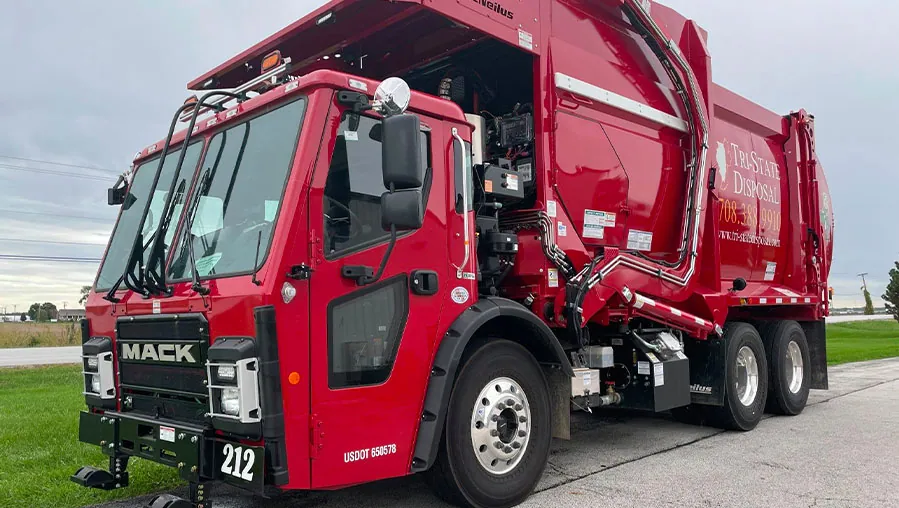Fast fashion is a well-known problem when it comes to waste. Fast furniture is a lesser-known but growing issue that more and more households are struggling with. Learn about fast furniture, why it’s harmful, and what you can do about it.
What Is Fast Furniture?
Fast furniture is a term used for furniture items that aren’t meant to last. Typically they are made of sub-par and low-value materials, like particle board, thin plastic, and even cardboard. Upholstery materials are weak and poorly manufactured, and the stitching and glues used aren’t designed to last more than a season or two.
The rise of popularity when it comes to fast furniture is centered around a modern society that is becoming increasingly more mobile, and by default, also more disposable. Fast furniture is designed to meet the constantly changing cycle of trends — this year’s couch will end up in next year’s landfill.
Low-quality furniture is also inexpensive, making it seem like a viable option during periods of wage stagnation and rising inflation. Unfortunately, these items can’t stand up to daily wear and tear so they will still end up in a landfill even if you aren’t planning to get new pieces every season.
Why Is Fast Furniture a Problem?
There’s many reasons why furniture with a short service life poses a problem. The following are the most pressing from an environmental standpoint.
1. Nearly 10,000 Tons End Up in Landfills
According to the Environmental Protection Agency (EPA), Americans sent nearly 10,000 tons of furniture straight to the landfill in 2018. Contrast this to the amount of new furniture produced, around 12,000 tons, and it’s easy to see that we are tossing just as much as we are buying new.
2. Very Little Furniture Is Reclaimed
Comparing the amount landfilled to amount that is reclaimed in recycling or waste-to-energy programs shows the disparity. The EPA shares that only 2400 tons of furniture were recycled or combusted for energy reclamation during the same 2018 time period.
3. Manufacturing Can Be Problematic
A lot of focus on fast furniture is on the end of life of these pieces, but there is environmental harm during the manufacturing process. Trees are cut down, metals are mined, and petroleum is turned into plastic in order to make fast furniture items that will only have a short service life.
4. Fast Furniture Can Be Toxic
Many items are manufactured using toxic materials. Wood finishes can contain heavy metals while upholstery is often infused with formaldehyde and other chemicals used in manufacturing or in an effort to strengthen weak materials. Not only can these substances be harmful to your health while in your home, but they can also pollute groundwater and soil if the furniture is not disposed of properly.
5. Disposal Is Complicated
Even the least eco-conscience way to dispose of fast furniture — sending it to the landfill — can be hard. Municipalities may not offer large item pickup, which puts the onus of disposal on the consumer.
How Can You Combat These Issues?
You may be looking around your home and wondering if it is too late to address this problem, especially if you already have one or more fast furniture pieces. The good news is that there are disposal options that can help offset the environmental harm
Disposal Options
Ideally, you will be able to reimagine your furniture and continue to use it for years with minor changes, such as slip covers. Unfortunately, most fast furniture will still end up as garbage sooner rather than later. Eco-friendly disposal options include:
- Recycling: Although some recyclers take furniture as is, most will require you to break it down into component pieces like metal, wood, and plastic so it can be delivered to the proper recycling center.
- Reuse: If you are getting rid of the furniture that still has some functional life in it, donating it to resale and thrift stores may be a viable option — or you can try to sell it yourself to recoup some investment.
- Compost: Unfortunately most wood furniture has finishes on it that prevent composting, but unpainted wood can be composted or used for garden structures.
Disposal options for furniture do depend on what is available locally. For example, some disposal companies will take furniture as-is and then sort it themselves for scrap metal and other recyclable components. Otherwise, the task of disassembly and sorting items for specific recyclers will fall on the owner that is disposing of the piece.
Prevention Tactics
Fast furniture is problematic, both during production and when it’s time to responsibly dispose of it. In the future, avoid these challenges with some prevention tips.
- Avoid the purchase of cheaply made furniture, especially items that are designed for short trends or single-season use.
- Shop second-hand and learn the features to look for to find quality-made pieces at similar prices to shoddily made fast furniture.
- Consider the end-of-life for any pieces you bring into the home — if you must buy fast furniture then choose unfinished wood items or all-metal items that can be easily recycled when you are through with them.
Contact Tri-State Disposal if you need help getting rid of old and damaged fast furniture.




